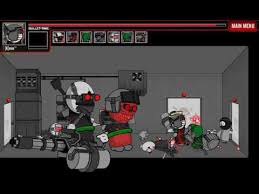Imagine a cosmic explosion so powerful that it outshines an entire galaxy and leaves behind breathtaking remnants that can be observed from Earth even after thousands of years. This isn’t the plot of the latest space-themed video game; it’s the reality of a supernova. For online gamers and school students, understanding these stellar events can add a fascinating layer to both virtual adventures and academic pursuits.
This blog post will take you on an interstellar journey to explore the spectacular phenomenon of supernovae. We’ll uncover what they are, how they occur, and why they matter not just to scientists but also to curious minds like gamers and students. By the end, you’ll see how these cosmic events are relevant to both your gaming strategies and educational interests.
Supernova Unblocked
A supernova is a powerful and luminous explosion that marks the end of a star’s life cycle. When a star has burned through its nuclear fuel, it collapses under its own gravity and then explodes, releasing an enormous amount of energy. These explosions are not just visually stunning; they play a critical role in the cosmos by dispersing elements like carbon and oxygen into space, which eventually contribute to the formation of new stars and planets.
Stars come in various sizes, and only those that are at least eight times bigger than our sun have the potential to become supernovae. Despite their rarity, these events are crucial for understanding the universe. They provide clues about how galaxies form and evolve over time. For gamers and students, visualizing this explosive process can make both virtual and real-world explorations more dynamic and engaging.
The Science Behind Supernovae
The science of supernovae involves complex processes related to nuclear fusion and gravitational forces. When a star’s core runs out of nuclear fuel, it can no longer support its own mass. Gravity takes over, causing the core to collapse rapidly. This collapse generates intense heat and pressure, leading to a cataclysmic explosion.
There are two primary types of supernovae. The first is the Type I supernova, which occurs in binary star systems when a white dwarf star pulls material from its companion star until it reaches a critical mass and explodes. The second is the Type II supernova, occurring when a massive single star exhausts its nuclear fuel and its core collapses. Both types release a staggering amount of energy, making them visible across vast distances in space.
Understanding these scientific principles can enhance your appreciation of space-based video games, which often draw inspiration from such cosmic phenomena. Additionally, students studying astronomy can gain valuable insights into stellar evolution and the forces that shape our universe.
History of Supernovae
Supernovae have been observed and recorded by various civilizations throughout history. The earliest known record dates back to 185 AD, when Chinese astronomers documented a “guest star” that appeared suddenly in the sky. Another famous historical supernova, SN 1054, was observed in 1054 AD and is associated with the Crab Nebula.
In modern times, supernovae continue to captivate astronomers and the general public alike. The 1987A supernova, observed in the Large Magellanic Cloud, provided astronomers with valuable data about the lifecycle of stars. These observations have contributed significantly to our understanding of stellar physics and the dynamic processes occurring in the universe.
For gamers, these historical accounts offer intriguing backstories that can be incorporated into space-themed adventures. Similarly, students can explore these events in their studies, gaining a deeper appreciation for both ancient and modern astronomical achievements.
The Evolution Supernovae
Supernovae play a crucial role in the evolution of galaxies. When a star explodes, it releases heavy elements into space, enriching the interstellar medium and providing the raw materials for new star formation. These elements include essential components for life, such as carbon, nitrogen, and oxygen.
The energy released by a supernova can also trigger the formation of new stars by compressing surrounding gas clouds. This process, known as “starburst,” contributes to the dynamic and ongoing development of galaxies. In essence, supernovae are both destroyers and creators within the cosmic ecosystem.
For gamers exploring virtual galaxies, understanding these processes can add depth and realism to gameplay. Students studying galactic evolution can also benefit from learning about the pivotal role supernovae play in shaping the universe.
One of the most visually captivating aspects of supernovae is the remnants they leave behind. These remnants are composed of the outer layers of the exploded star, which expand outward at high speeds, creating intricate and colorful patterns in space.
One well-known example is the Crab Nebula, the remnant of a supernova observed in 1054 AD. Its vibrant filaments and glowing gases make it a favorite target for both professional astronomers and amateur stargazers. Another striking remnant is the Veil Nebula, characterized by its delicate, lace-like structures.
For gamers, these stunning visuals can serve as inspiration for game design, providing immersive environments that captivate players’ imaginations. Students can use images of supernova remnants to enhance their understanding of the physical processes occurring in space, bringing textbook concepts to life.
Supernovae are responsible for creating many of the elements found on the periodic table. During the explosion, nuclear reactions occur at extreme temperatures and pressures, resulting in the formation of elements heavier than iron. These elements are then dispersed into space, where they eventually become part of new stars, planets, and even living organisms.
This cosmic recycling process means that the elements in our bodies were once forged in the heart of a star. For students, this connection between the cosmos and our own existence can be a powerful motivator for learning and exploration.
Gamers can also draw inspiration from this process, incorporating themes of elemental creation and transformation into their game’s narrative. By understanding the cosmic origins of elements, game developers can create storylines that resonate with players on a deeper level.
How Supernovae Influence Earth
While supernovae occur far beyond our solar system, they can still have an impact on Earth. When a nearby supernova explodes, it releases cosmic rays and other energetic particles that can affect our planet’s atmosphere. These particles can cause changes in climate and even influence rates of extinction.
However, the chance of a supernova occurring close enough to pose a significant threat to Earth is extremely low. Most supernovae occur at safe distances, allowing us to study and appreciate them without concern for our safety.
For students, learning about the potential influence of supernovae on Earth can provide a broader perspective on the interconnectedness of cosmic events and our planet. Gamers can also use this concept to develop plots involving cosmic threats and Earth’s resilience, adding a layer of excitement to their virtual worlds.
Tips and Tricks for Supernovae
Astronomers around the world are constantly on the lookout for new supernovae. By observing these events, scientists can gather data to test theories about stellar evolution and the expansion of the universe. Advanced telescopes and observatories, both ground-based and space-based, are used to detect and study supernovae in distant galaxies.
Citizen science projects have also emerged, allowing amateur astronomers and interested individuals to participate in the search for supernovae. These initiatives provide valuable contributions to the scientific community while engaging participants in the thrill of discovery.
Gamers can explore the art of detection and discovery through interactive games that simulate the search for supernovae. Students can also participate in citizen science projects, gaining hands-on experience in the field of astronomy and contributing to real scientific research.
Supernovae in Popular Culture
Supernovae have captured the imagination of artists, writers, and filmmakers for centuries. From literature to movies, these celestial events have been depicted as symbols of transformation, destruction, and rebirth. In recent years, science fiction video games have incorporated supernovae into their narratives, offering players the opportunity to explore these cosmic phenomena firsthand.
For gamers, understanding the scientific basis of supernovae can enhance their appreciation of these cultural depictions. Students can also explore how supernovae have been portrayed in the arts, gaining insights into the ways in which science and storytelling intersect.
By examining the representation of supernovae in popular culture, both gamers and students can deepen their understanding of the cultural significance and enduring allure of these cosmic events.
The Future of Supernova Research
As technology advances, so too does our ability to study and understand supernovae. New telescopes and observatories, such as the James Webb Space Telescope, will provide unprecedented views of these stellar explosions, offering insights into the earliest stages of the universe and the nature of dark energy.
Ongoing research into supernovae also holds the potential to uncover new aspects of stellar evolution, galaxy formation, and the ultimate fate of the universe. For students, staying informed about these developments can inspire future careers in astronomy and astrophysics.
Gamers can look forward to incorporating the latest discoveries into their virtual worlds, ensuring that their games remain both exciting and scientifically accurate. By keeping abreast of emerging research, students and gamers alike can continue to explore the wonders of the universe and push the boundaries of human knowledge.
Conclusion
From their awe-inspiring explosions to their essential role in shaping the cosmos, supernovae are among the most fascinating phenomena in the universe. For online gamers and school students, understanding these stellar events offers a wealth of opportunities for learning, creativity, and engagement.
By exploring the science, history, and cultural significance of supernovae, you can enrich your gaming experiences and academic pursuits. Whether you’re designing a space-themed game or studying astronomy in school, the knowledge you’ve gained from this blog post will serve as a valuable foundation for your cosmic adventures.
For further exploration, consider joining citizen science projects, visiting observatories, or playing science-based video games that feature supernovae. The universe is vast and full of wonders start your interstellar journey today













